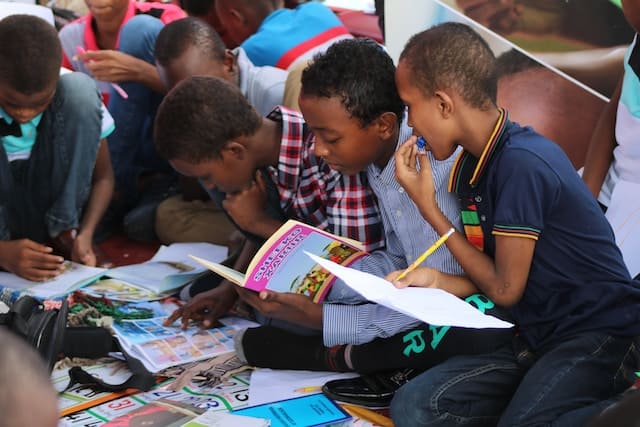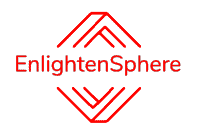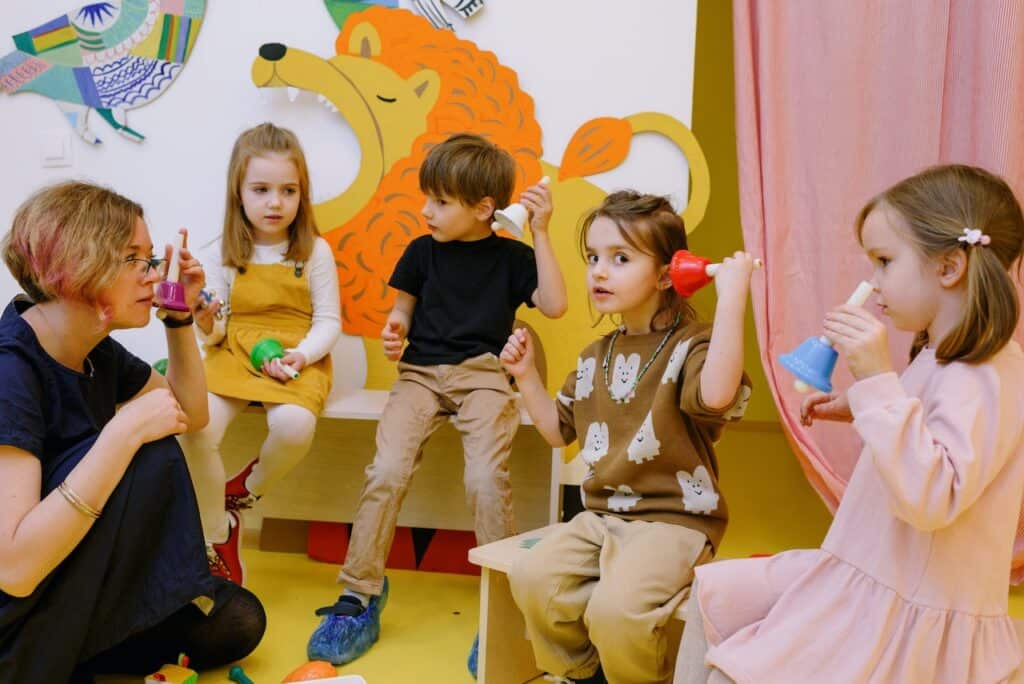As an educator, you understand the diverse learning needs of your students. Each learner has unique strengths, preferences, and ways of processing information. In today’s educational landscape, it is crucial to recognize and embrace the different modalities in teaching to cater to the diverse learning styles and maximize student engagement and achievement. In this blog post, we will explore some of the more common, and not so common approaches to teaching our students and how the importance of incorporating various modalities into your teaching practices can enhance student learning experiences. From visual and auditory approaches to kinesthetic and digital modalities, we will delve into the benefits and practical strategies for implementing these modalities in your classroom.
Teaching Styles
1. Traditional Classroom Instruction
While traditional classroom instruction remains a foundational modality, it has evolved to incorporate more student-centered and interactive approaches. This modality typically involves the teacher delivering content through lectures, discussions, and demonstrations. However, effective teachers today also emphasize active student participation, encourage critical thinking, and promote collaborative learning within the traditional classroom setting.
2. Technology-Enhanced Learning
In the digital age, technology has become an integral part of education. Technology-enhanced learning offers diverse opportunities for engaging and personalized instruction. Educators can leverage various tools such as interactive whiteboards, educational apps, online resources, multimedia presentations, and virtual simulations to create dynamic learning experiences. This modality promotes active learning, collaboration, and the exploration of new knowledge through digital platforms.
3. Blended Learning
Blended learning combines face-to-face instruction with online learning experiences. It provides flexibility and individualization by integrating both traditional and technology-mediated instruction. Teachers can incorporate online modules, virtual discussions, multimedia presentations, and interactive activities into their lessons, allowing students to learn at their own pace and access resources beyond the classroom. Blended learning optimizes student engagement, fosters self-directed learning, and provides opportunities for differentiated instruction.
4. Project-Based Learning
Project-based learning (PBL) is an immersive and hands-on modality that promotes critical thinking, problem-solving, and collaboration. In PBL, students engage in real-world projects that require them to apply their knowledge and skills to solve authentic problems. This modality fosters creativity, research skills, and the development of a growth mindset. Students take ownership of their learning, work in teams, and present their findings, leading to deeper understanding and increased motivation.
5. Inquiry-Based Learning
Inquiry-based learning centers around student-driven investigations and questioning. This modality encourages students to explore concepts, ask meaningful questions, and seek answers through research, experiments, and analysis. By fostering curiosity, critical thinking, and problem-solving skills, inquiry-based learning promotes a deeper understanding of subject matter and nurtures a love for lifelong learning. Teachers act as facilitators, guiding students through the inquiry process and providing support as needed.
6. Flipped Classroom
The flipped classroom modality flips the traditional instructional model. Students engage with the instructional content independently before class through pre-recorded videos, readings, or online modules. Classroom time is then dedicated to interactive activities, discussions, and application of the acquired knowledge. The flipped classroom encourages active learning, peer collaboration, and individualized support, as teachers can provide targeted assistance to students based on their specific needs.
7. Differentiated Instruction
Differentiated instruction recognizes and responds to the diverse needs, interests, and learning styles of students. This modality involves tailoring instruction to accommodate individual strengths, challenges, and preferences. Teachers provide multiple entry points, varied instructional materials, and flexible assessments to ensure that every student can access and engage with the content. Differentiated instruction promotes equity, inclusivity, and academic growth for all learners.

8. Collaborative Learning
Collaborative learning emphasizes peer-to-peer interaction and cooperative group work. This modality encourages students to work together, share ideas, and collaborate on projects and assignments. Through collaborative learning, students develop communication skills, teamwork abilities, and a deeper understanding of different perspectives. Teachers facilitate and guide the collaborative process, fostering a supportive and inclusive classroom environment.
9. Gamification
Gamification leverages elements of game design and mechanics to enhance student engagement and motivation. This modality incorporates game-based activities, challenges, and rewards into the learning process. By adding an element of fun and competition, gamification stimulates active participation, boosts intrinsic motivation, and encourages students to persist in their learning endeavors. Teachers can utilize gamification techniques to reinforce learning objectives, track progress, and create immersive learning experiences.
10. Multisensory Instruction
Multisensory instruction engages multiple senses simultaneously to enhance learning and memory retention. This modality recognizes that students have different learning preferences and strengths. By incorporating visual aids, auditory cues, hands-on activities, and kinesthetic movements, teachers can cater to diverse learning styles and provide a more comprehensive learning experience. Multisensory instruction promotes active engagement, deeper understanding, and improved information processing.

Understanding Different Modalities
Visual Modality: Visual learners thrive when presented with information through images, charts, graphs, and visual aids. We will explore the importance of using visual elements to enhance understanding, promote retention, and engage visual learners effectively.
Auditory Modality: Auditory learners prefer learning through listening and speaking. We will discuss the significance of incorporating verbal instruction, discussions, lectures, and audio resources to engage auditory learners and reinforce their learning experience.
Kinesthetic Modality: Kinesthetic learners learn best through hands-on experiences and movement. We will explore the benefits of incorporating physical activities, manipulatives, and interactive tasks to actively engage kinesthetic learners and enhance their understanding and retention of concepts.
Tactile Modality: Tactile learners are offered hands-on experiences that promote sensory engagement, fine motor skills, and cognitive development. By incorporating touch and manipulation of materials, students enhance their understanding, retention, and application of knowledge, fostering a deeper connection with the subject matter.
Benefits of Incorporating Different Modalities
Enhanced Engagement
As a teacher, you understand the importance of capturing your students’ attention and keeping them engaged in the learning process. By incorporating different modalities into your teaching, you can create dynamic and interactive experiences that cater to their individual preferences and learning styles. Whether it’s through visual aids, hands-on activities, technology integration, or collaborative projects, you can spark their curiosity and maintain their interest throughout the lesson. This enhanced engagement leads to active participation, increased motivation, and a deeper connection with the subject matter.
Improved Comprehension
When students have the opportunity to learn through their preferred modality, they can better process and understand the information being presented. Some students may be visual learners who benefit from charts, diagrams, and infographics, while others may be auditory learners who thrive in discussions or lectures. By incorporating diverse modalities, you provide multiple entry points for students to grasp complex concepts and make connections. As a result, their comprehension deepens, and they are better equipped to retain and apply their newfound knowledge.
Inclusive Learning Environment
Every student is unique, with their own strengths, preferences, and ways of processing information. By embracing different modalities in your teaching, you create an inclusive learning environment where all students feel valued and empowered. By offering a variety of modalities, such as visual, auditory, kinesthetic, and digital, you provide multiple avenues for students to access and demonstrate their understanding. This fosters a sense of belonging and ensures that no student is left behind. By honoring their individuality and accommodating diverse learning styles, you create a classroom where every student can shine.
Differentiated Instruction
Your students come from diverse backgrounds and possess a wide range of abilities and learning needs. By incorporating various modalities into your instruction, you can effectively differentiate your teaching to meet the needs of every learner. Some students may require additional support or alternative approaches to grasp the content, while others may benefit from extension activities to further challenge their understanding. By offering a mix of modalities, you can tailor your instruction to cater to each student’s unique requirements, ensuring that they receive the necessary support, enrichment, and opportunities for growth. This personalized approach to teaching promotes equity, inclusivity, and academic success for all students.
Practical Strategies for Implementing Different Modalities
Varied Instructional Materials
Utilize a wide range of instructional materials, such as visual aids, videos, audio recordings, interactive websites, and manipulatives, to cater to different modalities and enhance student engagement.
Multimodal Presentations
Combine different modalities within your instructional presentations. For example, you can use a combination of visuals, auditory explanations, and kinesthetic activities to deliver content and engage students effectively.
Kinesthetic Learning Opportunities
Incorporate hands-on activities, simulations, role-playing, and project-based learning to provide kinesthetic learners with opportunities to actively engage with the subject matter and apply their knowledge.
Collaborative Learning
Again, encourage students to work together in group projects, discussions, and presentations. This allows them to learn from one another, share ideas, and engage in meaningful conversations, accommodating different modalities.
Challenges and Considerations
Time Constraints
Incorporating different modalities may require additional planning and preparation time. Consider how you can integrate various modalities effectively within the constraints of your curriculum and schedule.
Access to Resources
Ensure that you have access to a variety of resources, such as technology, visual aids, and manipulatives, to support the implementation of different modalities in your teaching.
Assessment Methods
Consider how you can assess student learning when incorporating different modalities. Provide opportunities for students to demonstrate their understanding through diverse assessment methods that align with their preferred modalities.

In Conclusion
Incorporating diverse modalities in teaching opens up a world of possibilities for educators to create dynamic and engaging learning experiences tailored to the unique needs, strengths, and interests of their students. From traditional classroom instruction to technology-enhanced learning and project-based approaches, each teaching style brings its own set of benefits and opportunities for student growth.
As you embark on this journey of exploring different teacher styles and modalities, it is essential to remember that effective teaching requires intentional planning, ongoing reflection, and adaptability to meet the evolving needs of your students. Be open to experimenting with different approaches, seize opportunities for professional development, collaborate with your colleagues, and actively seek feedback from your students. By embracing a diverse range of modalities, you can create a vibrant and inclusive learning environment that empowers your students to thrive, grow, and excel.


